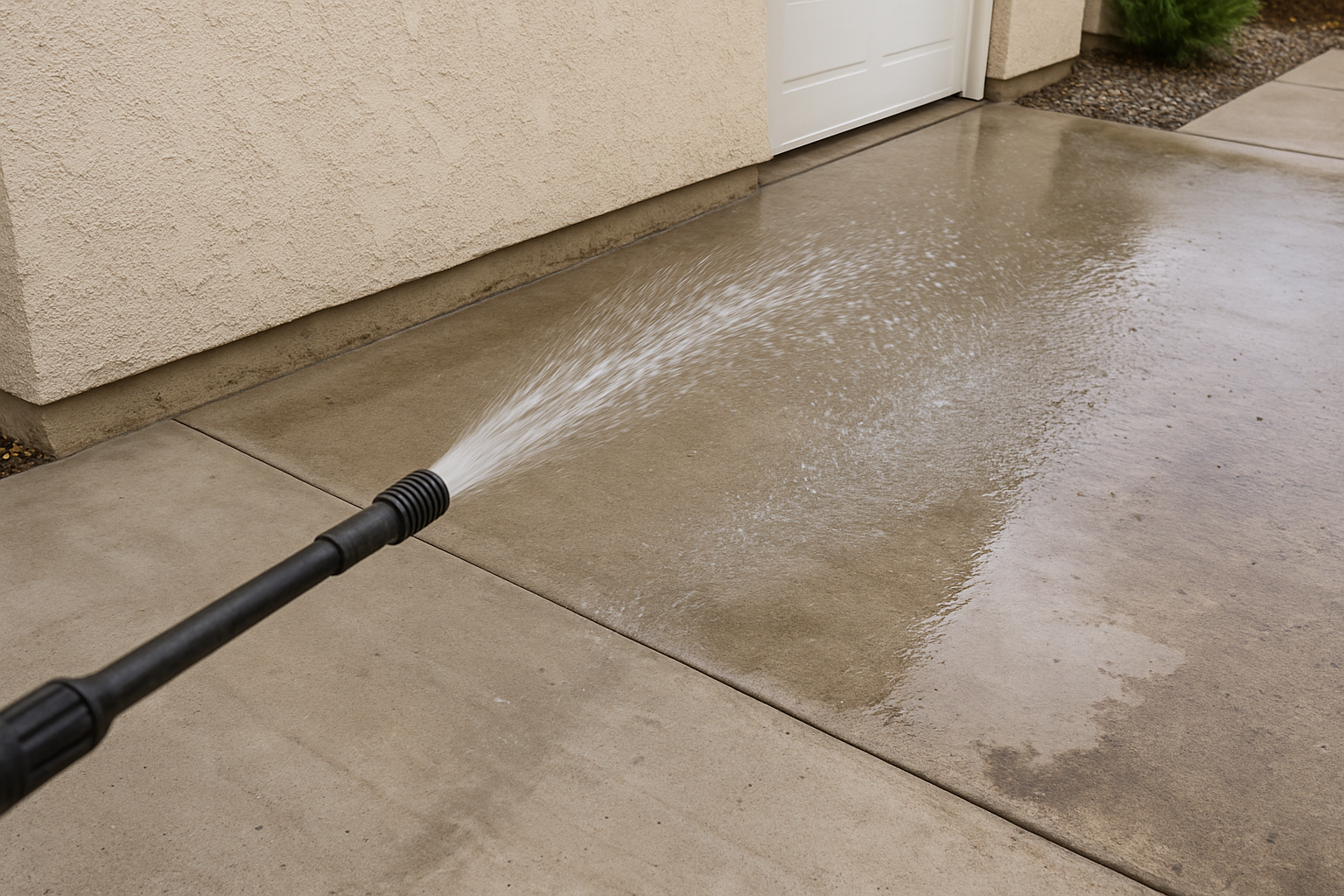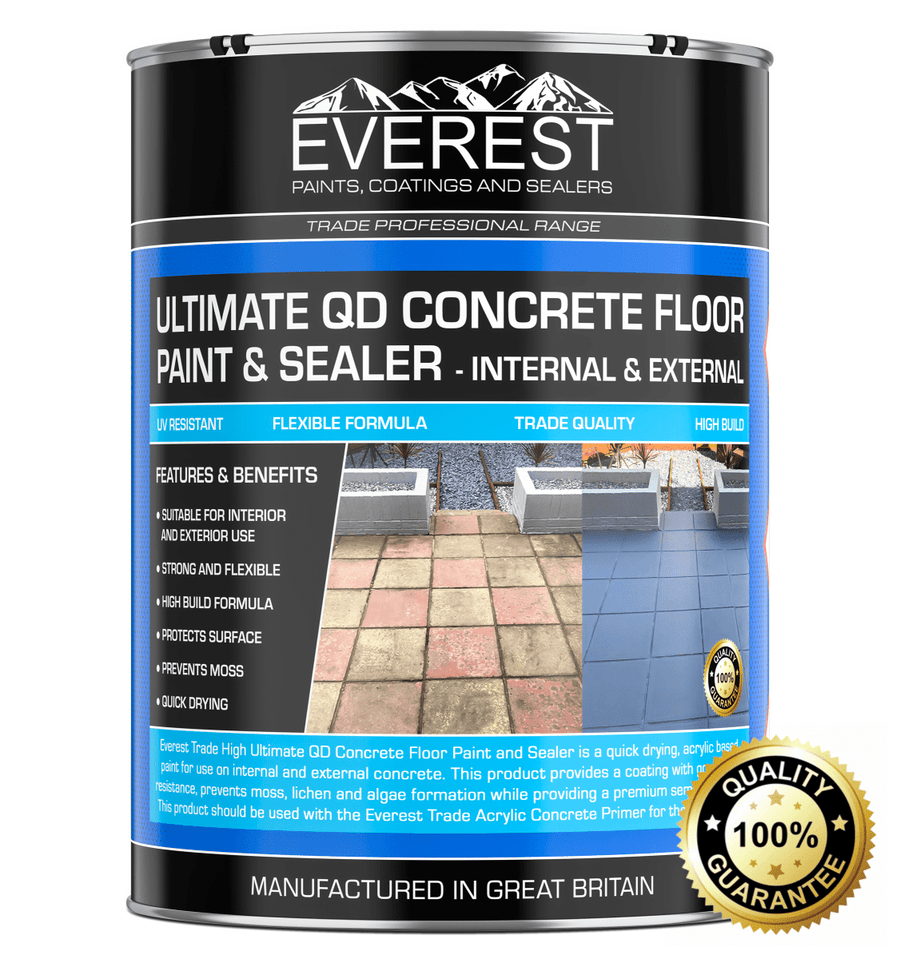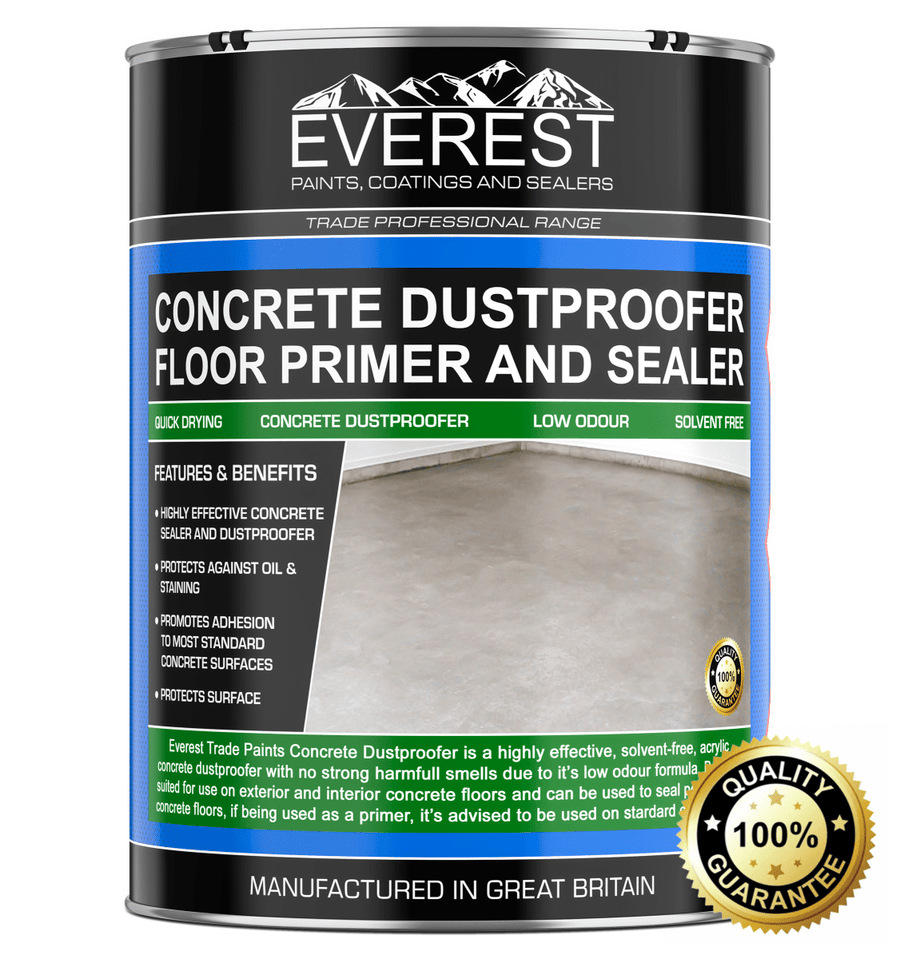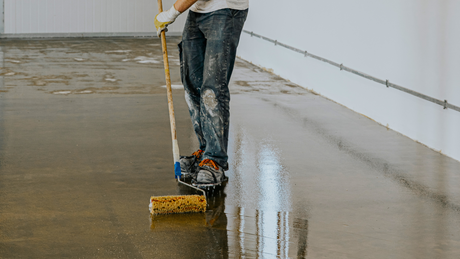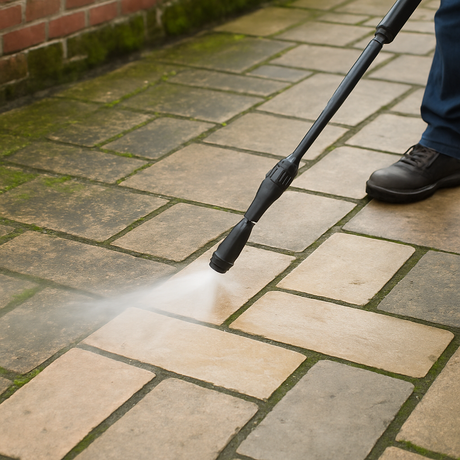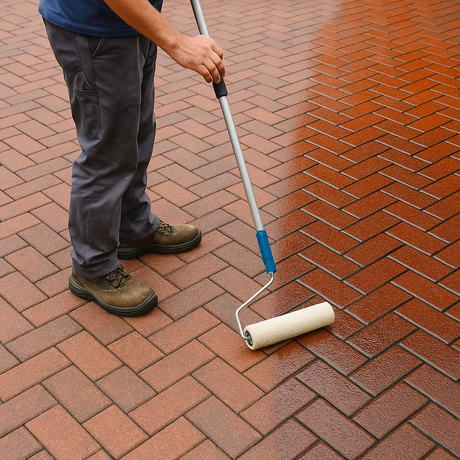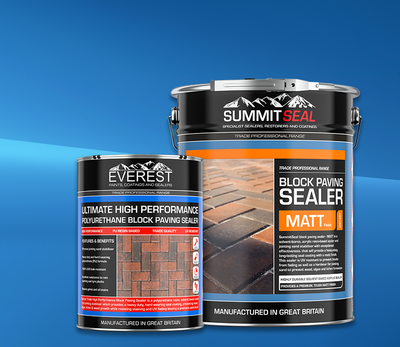Driveway Coatings: Should You Use Paint, Primer, or Sealer?
Driveway paint, driveway sealer, driveway primer—it can be confusing. Each has its place, but the products you choose depend heavily on your surface. In this guide we’ll break down the differences, when a primer is genuinely needed, and how Premium Paints’ driveway coatings can give you a professional, long-lasting finish.
Driveway Paint, Driveway Primer, Driveway Sealer: What’s The Difference?
Although the terms get used interchangeably, they serve different purposes:
- Driveway Paint: Adds colour and surface protection. The standout in our range is the Everest Trade QD Ultimate Concrete Floor Paint Sealer, designed for patios and concrete driveways. It’s a high-performance coating that gives an anti-slip, durable finish outdoors.
- Driveway Sealer: Clear sealers (like our SummitSeal range) protect against water, oil, frost and UV while locking in colour. They don’t require a primer—simply apply to a clean, dry surface.
- Driveway Primer: Used only in specific cases to improve adhesion and durability. For our range, primer is only needed when applying the Everest Trade QD Ultimate Concrete Floor Paint Sealer. In that case, use Everest Trade Concrete Dustproofer first to stabilise the surface.
This distinction is key: clear sealers don’t need priming, while our exterior grade paint does benefit from a primer for best results.
Understanding Your Driveway Material
Your driveway material determines which coating will work best:
| Material | Best Coating Option | Why It Works |
|---|---|---|
| Asphalt/Tarmac | Water-based or acrylic tarmac paints & sealers | Re-binds loose surface, restores colour, resists UV & oil. |
| Block Paving | SummitSeal Block Paving Sealer | Stops weeds, prevents staining, enriches colour. |
| Concrete | Everest Trade QD Ultimate Concrete Floor Paint Sealer + Dustproofer Primer | Paint gives colour & slip resistance; primer ensures adhesion on porous surfaces. |
Essential Steps For Driveway Painting and Driveway Sealing
Whether you’re painting or sealing, proper preparation and application are crucial for a successful and long-lasting finish for your driveway.
Preparing for Driveway Coating
-
- Clear vegetation: Use a weed whip to trim grass hanging over the edges, and make sure to clean out any vegetation from the cracks or gaps. You can also use a moss and algae remover to assist this removal if necessary.
- Deep clean: Once you have removed the vegetation, ensure you remove the debris using a leaf blower. Continue cleaning with a pressure wash to remove any dirt, oil stains, moss, or other contaminants. For concrete, use a concrete cleaner or degreaser for stubborn stains. Asphalt sealer won’t bond to dirt, so cleanliness is paramount at this stage.
- Repair surface: Fill cracks or joints before coating.
- Ensure dry: Your driveway must be completely dry before proceeding. For block paving, allow at least 14 days after cleaning to monitor the efflorescence (salt deposits) before sealing, as you don’t want to seal in the marks they leave. Some sealants may require the jointing sand to be bone dry underneath, which might require you to rake out some sand to check.
Essential Checks Before Driveway Coating
Before applying any coating, you should check and address any imperfections in the material of your driveway.
-
- Tarmac - Fill all cracks with a good-quality crack filler. For larger holes, use pre-mixed tarmac to fill these and seal the edges with a cold jointing before tamping down new tarmac.
- Block paving - Rejoint the paving by filling gaps between blocks with kiln-dried sand or a 3mm jointing aggregate for Infilta block paving. Wait 12-24 hours for the material to settle before applying the sealant.
- Concrete - Inspect for cracks, chips, omitting, or spalling. Use a concrete crack filler for cracks, or a more robust concrete patching compound for larger cracks, chips, or spalled areas.
The Role of Driveway Primer: When Is It Actually Needed?
For most of our coatings—especially clear sealers—primer is not required. The only time you need a primer is if you’re using our Everest Trade QD Ultimate Concrete Floor Paint Sealer, which is designed for patios and concrete driveways.
In this case, we recommend first applying Everest Trade Concrete Dustproofer. This seals the porous surface, dustproofs it, and ensures the paint bonds properly for a long-lasting finish.
Applying Your Chosen Driveway Coating (Paint or Sealer)
Applying your driveway paint or sealer correctly is essential for a smooth and durable finish. Always wear protective clothing while applying.
Asphalt/Tarmac Sealers:
-
Stir the product thoroughly as solids can settle.
-
For asphalt, we recommend cutting the edges in with a soft-bristle brush. Then, pour two or three gallons of sealer onto the asphalt and spread it out with a squeegee, pushing the material up and pulling it back to fill crevices. Go up and down the driveway at least three times, and at the end, run the opposite way to avoid sealer on the road.
Block Paving Sealers:
-
Test the sealant first on a small, hidden area to check the finish.
-
Apply sealant evenly across the driveway using a paint roller or sprayer.
-
Follow the manufacturer's guidelines for drying times and application methods.
-
We recommend applying two coats, with the second coat applied once the first is tack-dry.
Concrete Paint/Sealant:
-
Ensure the paint or sealer is thoroughly mixed.
-
Start by cutting in edges and corners with a brush.
-
Use a roller with a thick nap (2 to 2.5cm) for the main surface, applying paint in a W or M pattern and then backrolling for even distribution. Apply in thin, even coats; multiple thin coats are better than one thick one.
-
If using a sprayer, hold it at a consistent distance and move in smooth, overlapping strokes.
-
Allow sufficient drying time between coats (typically 4-6 hours, but can be longer) as recommended by the manufacturer. Apply the second coat only after the first is completely dry.
Key Considerations When Driveway Coating
To ensure the best results, you will need to keep certain factors in mind, like the weather and reapplication over time.
Weather Conditions For Driveway Coating
The weather will significantly impact the application, adhesion, and drying process. Always ensure to check the weather on the days you plan on using driveway sealant or paint.
Temperature - Always aim for dry weather when applying any driveway coating. Avoid extremely cold temperatures below 10°C or high temperatures above 30°C, as these can cause issues like thickening, slow drying, blistering, or rapid drying.
- Block paving - Temperatures between 10°C and 25°C.
- Tarmac - Temperatures above 21°C.
- Concrete - Temperatures between 10°C and to 30°C.
Rain and moisture - It is crucial to avoid rainy weather; never paint or seal if rain is forecasted within 24 hours before or after painting. The surface needs to be completely dry, as the moisture can prevent proper adhesion.
Humidity and Wind - High humidity slows drying, while strong winds can blow debris onto the surface or cause rapid drying.
Time of day/season - Painting early morning or late afternoon helps to avoid the midday heat. Spring and Autumn are ideal seasons with moderate temperatures, but be mindful of showers and morning dew.

